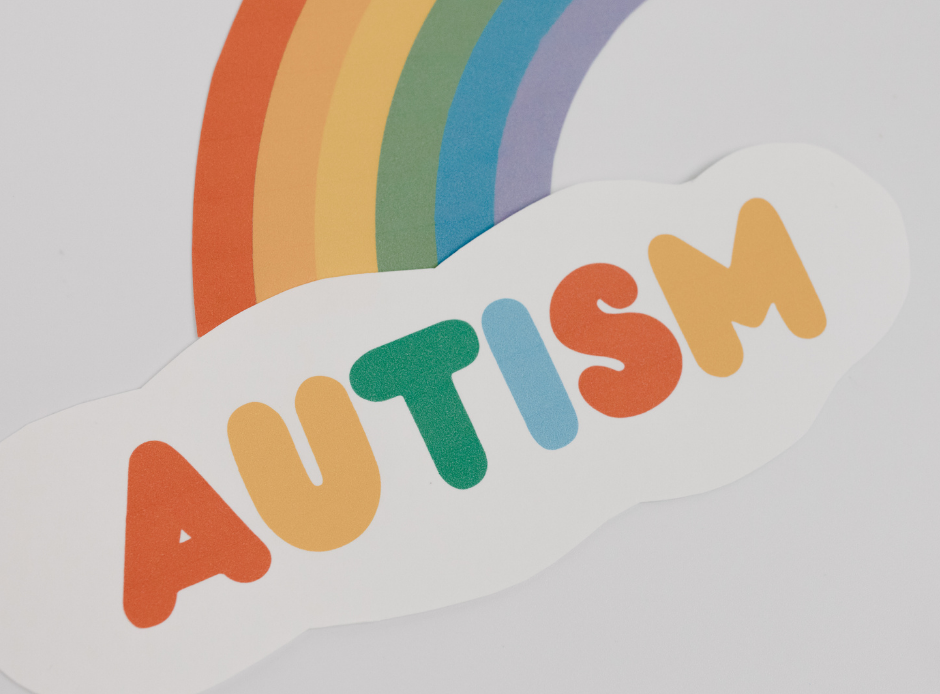
Teaching your child to improve self-regulation can help them learn and thrive in any environment. Self-regulation is a critical skill for all children, but it is especially important for children with autism spectrum disorder (ASD) and attention disorders.
It is very common for parents to face resistance when kids are asked to do things they don’t want or are not interested in doing. Typically developing children can improve their self-management skills, or executive functions, as they grow older and become more mature and responsible.
However, children diagnosed with autism, attention deficit hyperactivity disorder, dyslexia, traumatic brain injury and other learning disabilities can find it more challenging. They might overreact to situations, experience negative emotions longer than same-age peers, have a short temper, display emotional outbursts, and present mood swings.
To better understand why emotional regulation and self-management are so tricky for some children, it helps to look at the role of the executive functions.
What is Executive Function?
In simple terms, Executive Function is everything we do every day to manage our behaviour. Some common executive function processes are:
- Working memory
- Task initiation
- Sustained attention
- Flexibility
- Planning
- Organisation
- Problem-solving
Although executive functions are often thought of as brain functions, Dr. Adel Najdowski, director of the Master of Science in Behavioural Psychology program at Pepperdine University, says all executive functions involve behaviour. Therefore, individuals with deficits may be able to learn specific behaviours to improve their executive function performance.
How to Improve Self-regulation in Children with Autism and Attention Disorders
While I am not a specialist in autism or attention disorder, the strategies I’ll share have been used successfully by mental health professionals for decades.
Teach strategies instead of behaviour mitigation
Emotional regulation problems result from underlying deficits in the ability to cope with emotions and effectively self-regulate. As a result, interventions to control problematic behaviour are often ineffective.
Teach the Zones of Regulation
The Zones of Regulation (see our printable) targets underlying deficits with the ultimate objective of improving self-regulation and social success. The techniques and zones focus on self-control, building emotional resiliency, self-management, impulse-control, and sensory regulation. Any child with or without autism who has difficulties with self-regulation can significantly benefit from this strategy.
The Red Zone – describes exceptionally heightened states of alertness and intense emotions, including anger, rage, intense sadness, and terror. These are the emotions associated with a fight-or-flight response.
The Yellow Zone – describes elevated emotions and heightened emotional states but excludes the intense emotional experiences of the Red Zone. These emotions can be negative or positive, including anxiety, stress, nervousness, excitement, and restlessness.
The Green Zone – describes common emotional states, including happiness, contentment, calmness, and readiness to learn.
The Blue Zone – describes low states of alertness. Typical emotions experienced in this state include sadness, boredom, and exhaustion. A person may feel tired or depressed while in this zone.
It is important for parents to model appropriate behaviours and explain the emotions to the child as they experience them, including labelling the emotion, helping to identify its triggers, and experimenting with and utilising effective coping skills. For example, a parent may say the following: “I feel angry when someone is late to meet me. I can take ten deep breaths. It will help me relax,” or “You look tired after working on your math homework. Do you need to take a break?”
Model coping skills
Label your own feelings and explain how you will handle those feelings.
Communicate your expectations
If you require your child to complete a task, explain your expectations clearly and in a calm manner. Simply saying, “It is time to clean your room.” might be too vague for some children.
Describe how a clean room looks. For example, say, “A clean room has a tidy bed, no clothes on the floor, toys inside the basket.” Some children may need visual representation such as a photo of their clean room or any other chore.
Acknowledge your child’s feelings
Let your child know that everyone feels angry, sad, or disappointed at times. For example, you could say: “Turning the TV off made you disappointed.” However, avoid following up with “BUT”, for example, “Turning the TV off made you disappointed, but it is time to have a shower.” Adding but to the statement gives the impression that you don’t care about the feeling and are only interested in the task you want to be done.
Try: You don’t want to turn the TV off, and it is time to have a shower. I can see how this would be disappointing for you.”
Organise your day
Your child will be more interested in playing a video game than unloading the dishwasher. Some activities are hard to stop, especially if there are electronic devices involved. Plan to have the chores and important tasks completed before the child has the chance to get engaged in a more interesting activity. Provide visual schedules to make the day as predictable as possible.
Use First-Then
You can say, “First, you are putting your toys away, then you are going to play with your cars.”
Prepare for Transitions
Provide verbal and visual reminders. For example, you can use a timer or say: “You have five more minutes to play. After that, you are going to brush your teeth.”
Practice Calming Activities
Experiment and learn what works best for your child. Try proprioceptive activities, vestibular activities, deep pressure, deep muscle work, oral and tactile activities.
What to do during a meltdown?
Remember, children with autism and other attention disorders are not acting out to push our boundaries or to get at us. They are crying, wailing, or flailing because that’s what their bodies need to do in that moment to release tension for feeling overwhelmed with emotions or sensory stimulation.
Be Empathic
Listen and acknowledge their emotion and guide them to express themselves in a way that doesn’t hurt themselves, others or damage property.
Make Sure They are Safe
Trying to stop the meltdown is often unproductive. To make sure your child is safe, stay as close to them as possible until they are ready to stop themselves.
Have a Sensory Toolkit
Keep a few sensory tools or toys around. You can offer these to the child when they are starting to feel overwhelmed. Some common sensory tools include weighted lap pads, noise-cancelling headphones, sunglasses, and fidget toys.
Don’t force them on your child when they’re melting down. Make these available and let them choose to use them.
See your child’s behaviour as a form of communication instead of defiance
You can use the Superpower Kids Zones of Regulation printable to help your child understand emotion zones.
Related Articles
How to help your child cope with anger




